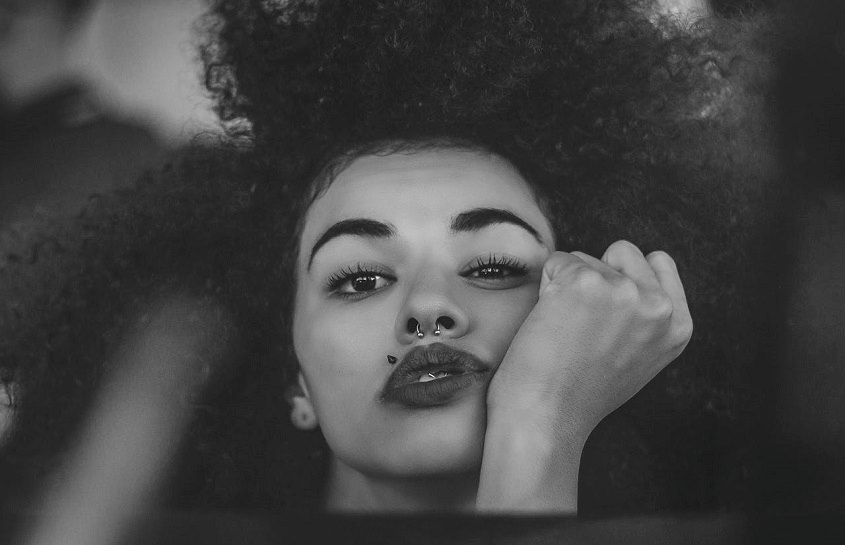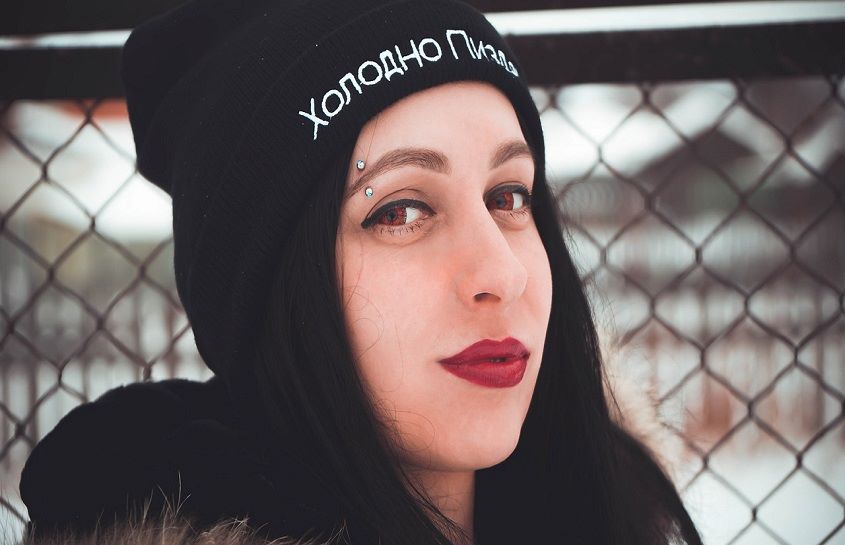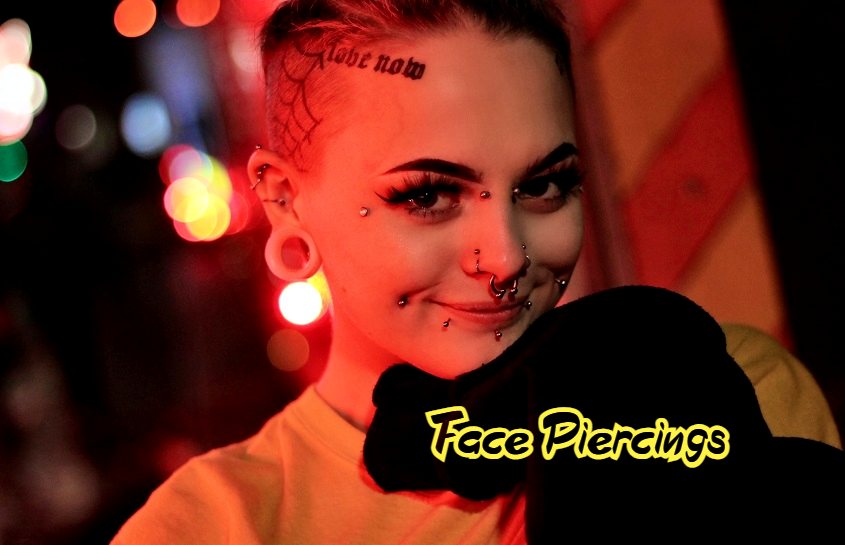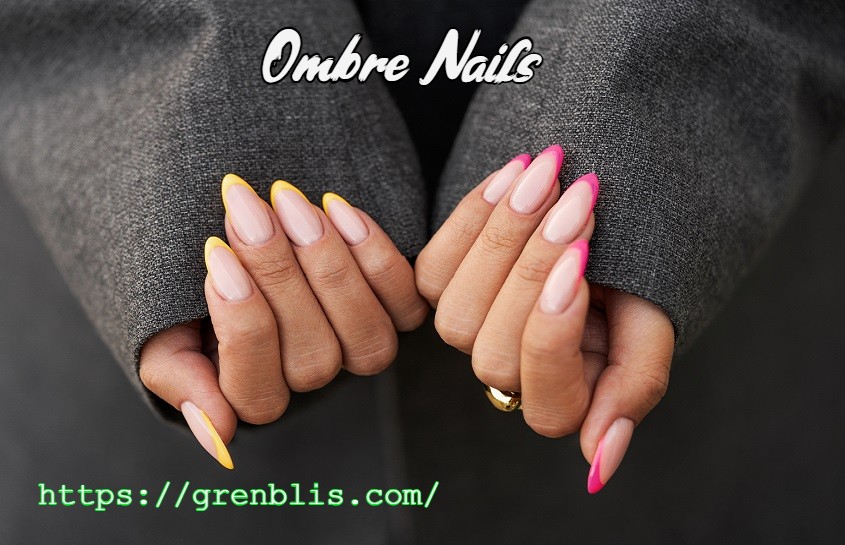Face piercings have been a primary means of self-expression and cultural tradition, in addition to being a fashion statement. With the numerous face piercings presented today, it is only right to understand the various styles, pain levels, and aftercare tips to ensure that one enjoys the experience. In our ultimate guide, we will look at the face piercing charts in detail, what are the popular piercing face types, and the essentials of aftercare tips for your new body art. Whether you’re considering a subtle nose stud or a bold dermal piercing, this guide will help you make an informed decision.
What are Face Piercings?
Face piercings is a process of piercing jewels into any point of the face. Facial piercings can be nose, eyebrow, lips, cheeks, or ear piercings, etc. The type of jewelry varies with every piercing. Some of the common facial piercings include nostrils and septum as well as eyebrow and lip piercings. They are one of the styles of self-expression where people can express their opinions on appearance. As part of aesthetic enhancement, one should care for face piercing and hygiene to ensure no infection occurs and failure in healing does not take place. Face piercing is a kind of art just like art ankinsart.
Advantages of Face Piercings
- Self-expression. Face piercings enable individuals to express themselves uniquely through their style.
- Variety of styles. There are different types of face piercings with various jewelry options.
- Cultural Significance: To others, face piercings have cultural or spiritual significance.
- Replaceable: Most facial piercings can be removed if they have to be; once the skin has healed fully over time.
Disadvantages of Face Piercings
- Risk of Infection: If the piercing care is not correct, infection or other issues can develop.
- Healing Time: Even though not every piercing takes a long time to heal, some piercings take a little longer and should be taken care of very well.
- Pain: Face piercings are painful at first and even in the healing process.
- Workplace Restrictions: Some workplaces also consider piercing to be against visible policy, which would reduce options in professional workplaces.
1. Understanding the Face Piercing Chart: Types of Face Piercings

Well, before we go on to discuss the specific types of face piercings, I’d like to reference a face piercing chart. Such a chart gives outlines on placement and terminology for each piercing, so you can have a visual cue of where that particular piercing is located on the face.
These include the nose, septum, eyebrow, lips, cheeks, and many other piercings; all of these piercings face names and locations lay the foundation for understanding the diversity in piercing types on the face and its various beauty compositions.
Popular face piercing names on the chart include:
- Eyebrow Piercing: Positioned along the brow line.
- Nostril Piercing: A classic piercing on the side of the nose.
- Septum Piercing: Through the cartilage separating the nostrils.
- Medusa Piercing: Above the upper lip, centred below the nose.
- Labret Piercing: Below the bottom lip, in the centre.
- Monroe Piercing: Off to the side above the lip, emulating Marilyn Monroe’s beauty mark.
These types of piercings each have their unique charm, offering an array of styles to suit different face types and personal preferences.
2. Piercing Face Types: Choosing Piercings for Different Face Shapes
Face shapes can also determine the right piercing. Some piercings complement certain face types more than others. Here are some guidelines for selecting piercings for face types:
- Round Faces: Vertical piercings such as eyebrow piercings or vertical labrets could stretch and define the face further for rounder faces.
- Oval Faces: Oval faces can sport just about any piercings including nostrils and even dermal piercings on the cheeks.
- Square Faces: Soft piercings like septum or nostril piercings soften out the sharp features of square faces.
- Heart-Shaped Faces: One of the key lip piercings that can be done on heart-shaped faces is the Monroe and Madonna piercing, which tends to balance out facial features.
Piercings that can work well with your face type should be discussed with a professional piercer, who will recommend which piercings will work well with your features.
3. Exploring Different Face Piercings: From Nostril to Dermal Piercing Face
Now, let’s dive into some of the most popular different face piercings and their distinct styles.
Nostril Piercing
No doubt, one of the most common and widely known piercings is the nostril piercing. It is located on either side of the nose. Perfect for beginners, it can be decorated with different pieces of jewelry such as studs, hoops, or rings. Pain level: medium. Usually, the healing process takes 4-6 months.
Septum Piercing
A septum piercing goes through the cartilage between the nostrils and is favored for its edgy look. It is very versatile to wear, and this piercing is often accessorized with circular barbells or captive rings. Pain-wise, it varies in degrees of intensity depending on how thick your septum might be, with healing around 6-8 weeks.
Eyebrow Piercing

These are positioned vertically or horizontally along the brow line, although fewer in number than nostril piercings, and will make a statement. The pain tolerance is medium in intensity, and healing takes anywhere from 6-8 weeks.
Medusa Piercing
This piercing is situated straight in the philtrum, which is the groove between the nose and upper lip. The location creates a balanced focal point on the face, though it hurts moderately because it lies in the center. Healing time is normally 6-12 weeks.
Dermal Piercing Face
One of the more distinctive piercing options is the dermal piercing face, where a single point of jewelry is inserted directly into the skin. It can be done almost anywhere on the face: cheekbone or under the eye – that gives a “floating” look. Overall, dermal piercings are moderate to highly painful as the procedure involves placing a small anchor under the skin. Healing time ranges from 1 to 3 months.
Lip Piercings (Labret, Monroe, and More)
Lip piercings come in many forms. The labret piercing is a simple but lovely piercing located just below the bottom of the lower lip. The Monroe piercing is located above the upper lip off to one side, modeling a kind of beauty mark. Lip piercings heal fairly quickly, in about 6-8 weeks, but swelling is normal during the early stages.
4. Pain Levels for Different Piercings on the Face
One of the most common concerns when considering face piercings is pain. While everyone’s pain tolerance varies, it’s helpful to know the general pain levels associated with different piercings on the face. Here’s a breakdown of common piercings and their relative discomfort:
- Nostril Piercing: Moderate pain.
- Septum Piercing: Moderate to high pain (depending on cartilage thickness).
- Eyebrow Piercing: Mild pain.
- Medusa Piercing: Moderate pain.
- Lip Piercings: Mild to moderate pain, with swelling.
- Dermal Piercing Face: High pain due to the insertion of an anchor.
Remember that pain is temporary, but the style and confidence your piercing gives you will last much longer!
5. Aftercare Tips for Types of Face Piercings

Proper aftercare is the secret to healing and prevention of infection. Whether you are getting a simple nose ring or a more complex dermal face piercing, these tips will ensure that your piercing heals very nicely.
General Aftercare Tips:
- Clean It: Clean your piercing twice daily with a saline solution. Avoid touching it with dirty hands to prevent entry by bacteria in the wound.
- Harsh Products: Do not apply alcohol or hydrogen peroxide since this can cause irritation and delay healing.
- Gentle: Avoid too much movement or trauma to the pierced area. Be careful, when you’re consuming or washing your face, in case of piercings around the mouth or nose.
- Right Jewelry: Use superior quality hypoallergic jewelry (surgical steel or titanium) that does not lead to an allergic reaction or problem during the healing process.
- Hydrate and Health: Healing will be faster if your body is healthy, so drink plenty, eat well like Ancient grain, and get plenty of rest.
- No Makeups, Creams, or Lotions: Do not use makeup, creams, or lotions near the piercing area because chemicals may irritate or cause infections in this pierced area. Specific Aftercare for Dermal Piercings.
For a face dermal piercing, additional care is required. Avoid tugging or pulling on the piercing, as it can shift the anchor or cause rejection. Keep the area clean and refrain from applying pressure, especially when sleeping.
Healing Times for Types of Face Piercings
- Nostril Piercing: 4-6 months.
- Septum Piercing: 6-8 weeks.
- Eyebrow Piercing: 6-8 weeks.
- Medusa Piercing: 6-12 weeks.
- Labret/Lip Piercings: 6-8 weeks.
- Dermal Piercing Face: 1-3 months.
6. Expressing Your Style: Choosing Jewelry for Different Face Piercings
Once your piercing has healed, you can experiment with different jewelry styles to enhance your look. From classic studs to bold rings, there’s something for everyone. For dermal piercings face, you can opt for elegant gems or minimalist flat discs. For lip piercings, try a range of hoops or studs to see what fits your style best.
Conclusion
Face piercings are an ageless means of expressing individuality and creativity in a uniquely presentable way. From popular choices such as the nostril and septum to more daring options like dermal piercings, there is something for everybody. Knowing the types of face piercings, their pain levels, and aftercare tips can encourage you to confidently embark on this piercing journey. Always see a professional piercer to ensure you get a safe and stylish result, and use this guide as your roadmap to navigating the world of face piercings with ease!
FAQ
A: Some of the common face piercings include the nose, the lip, the brow, the cheek, and dermal piercings, among others.
A: There is some discomfort that varies depending on the location of the face being pierced; however, most pain is only for a short, sharp pinch.
A: The healing times differ by up to 6 weeks, to a few months, depending on the piercing location.
A: Apply saline to clean the area, avoid touching it, and place a space between the makeup and the area to be pierced.
A: Yes; poor care or removal too soon will scarring to occur at the pierced site.
A: Yes, you can remove face piercings temporarily, but it’s essential to wait until it’s fully healed. Repeated removal may irritate or close the piercing, especially in new or healing piercings.
Read More:




